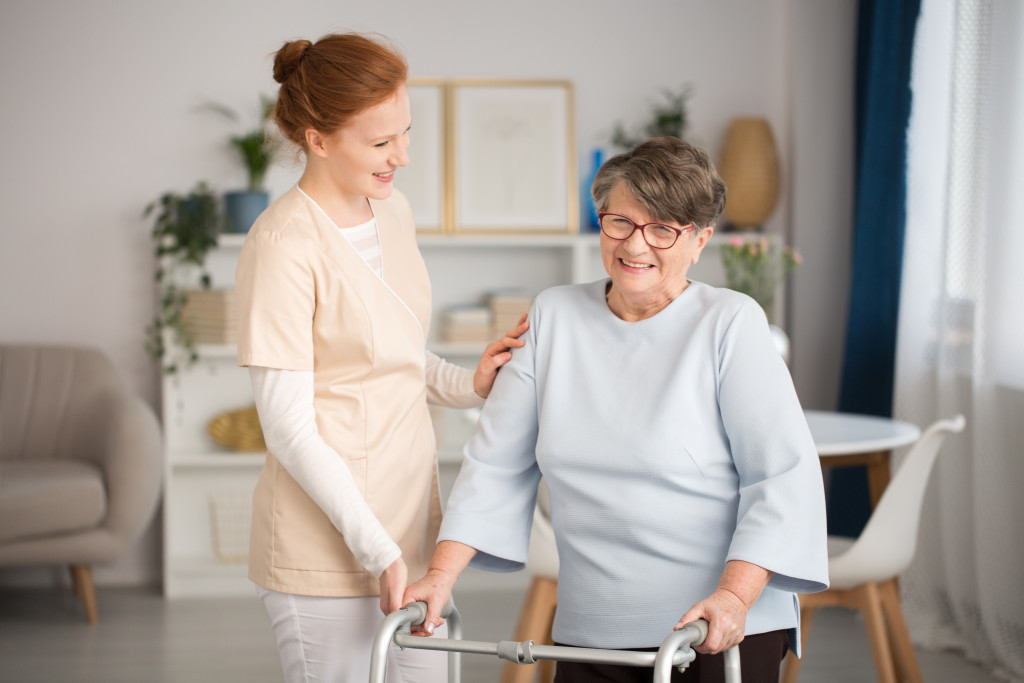Improving accessibility in the community does not only benefit people with disabilities themselves but also their families, friends, carers, as well as senior citizens. If you believe that your community has areas for improvement in terms of accessibility, there are many ways to help.
But first, let’s talk about what exactly in the community needs to be accessible:
Physical access
At home, people with physical disabilities, as well as seniors, can have power recliners and stair elevators to make their own space more disability-friendly. However, they might not get the same level of comfort or accessibility in public areas and buildings.
For this reason, physical access is perhaps the most critical priority in enhancing accessibility in the community. People with disabilities need to be able to access buildings and public spaces safely and easily through:
- Accessibility routes
- Wheelchair ramps
- Restroom accommodations
- Elevators
- Parking spots
- Signage and entrances
If you notice that some public spaces or buildings have little to no accessibility accommodations, take note of the locations so that you can bring it up to the local council.
Information and communication access
 Signage, telephones, public communication systems, and communication media need to be accessible to people who cannot hear, see, or use their hands as well. As such, communities must prioritize the creation of:
Signage, telephones, public communication systems, and communication media need to be accessible to people who cannot hear, see, or use their hands as well. As such, communities must prioritize the creation of:
- Signs with Braille
- Verbal and visual announcements
- Sign language interpretations and captions on local TV
- Sound-amplifying headphones for events or performances
Community access
People with disabilities have the right to enjoy the community just as much as non-disabled people. Parks, restaurants, shopping malls, and other community areas must offer non-discriminatory or differential treatment aside from being physically accessible.
At the same time, people with disabilities deserve fair access to community services, as long as they are qualified.
Employment access
As long as a person’s disability does not interfere with a job’s primary function, they should be fairly treated as an applicant. Lack of employment opportunities is one of the biggest problems for people with disabilities, and it often leads to financial difficulties and, in worst cases, homelessness. Hence, access to employment should be fair for all, regardless of disability.
Moreover, employers are obligated to make the necessary changes to accommodate a disabled employee. As much as possible, a disabled person must be able to do their job as quickly and effectively as a non-disabled employee. For example, the employer can make the disabled employee’s workspace bigger to accommodate a wheelchair, or they can place the workspace near the door for easy access.
Education access
Similar to employment, people with disabilities must be given equitable access to education. Access should include specialized training for people with cognitive disabilities or learning limitations, and specific accommodations should be made accordingly.
Is accessibility lacking in your community?
The Americans With Disabilities Act of 1990 prohibits discrimination against people with disabilities across all aspects of public life, including employment, education, transportation, and community access. The law aims to give people with disabilities the same rights and opportunities that non-disabled people have.
However, the regulations under ADA are not always enforced, or at least not as well as they should be. There are no ADA inspectors who go around to check if buildings and public areas are adequately accessible. Hence, reporting is often necessary to enforce ADA standards.
How you can do your part
Whether you have a disability or not, you can always speak up for the betterment of accessibility in your community. Here’s how you can do that:
1. Find the right avenue
Find the ADA coordinator in your locality and make your case with them. You can send them an e-mail, a letter, or give their office a call. Alternatively, you can address the issue with your local government.
2. Make your case clear
Describe your concern clearly and concisely. Include the legislation regulation that has been violated if you wish.
3. Wait for a response
Allow a reasonable amount of time to pass. If you get no response or receive an unsatisfactory one, move on to the next step.
4. Contact the government
Take your case to the Local or State Government. You can also choose to get a lawyer if you think you need one, as well as reach out to advocacy groups who support the same cause.
5. Reach out to others
Make the community more aware of disability access by sharing information online, working with advocacy groups to stage events, and enlisting the help of the media, among other strategies.
Access to all aspects of the community is everyone’s right. If you see that accessibility is lacking in your community, don’t hesitate to speak up and demand proper action from the government.
